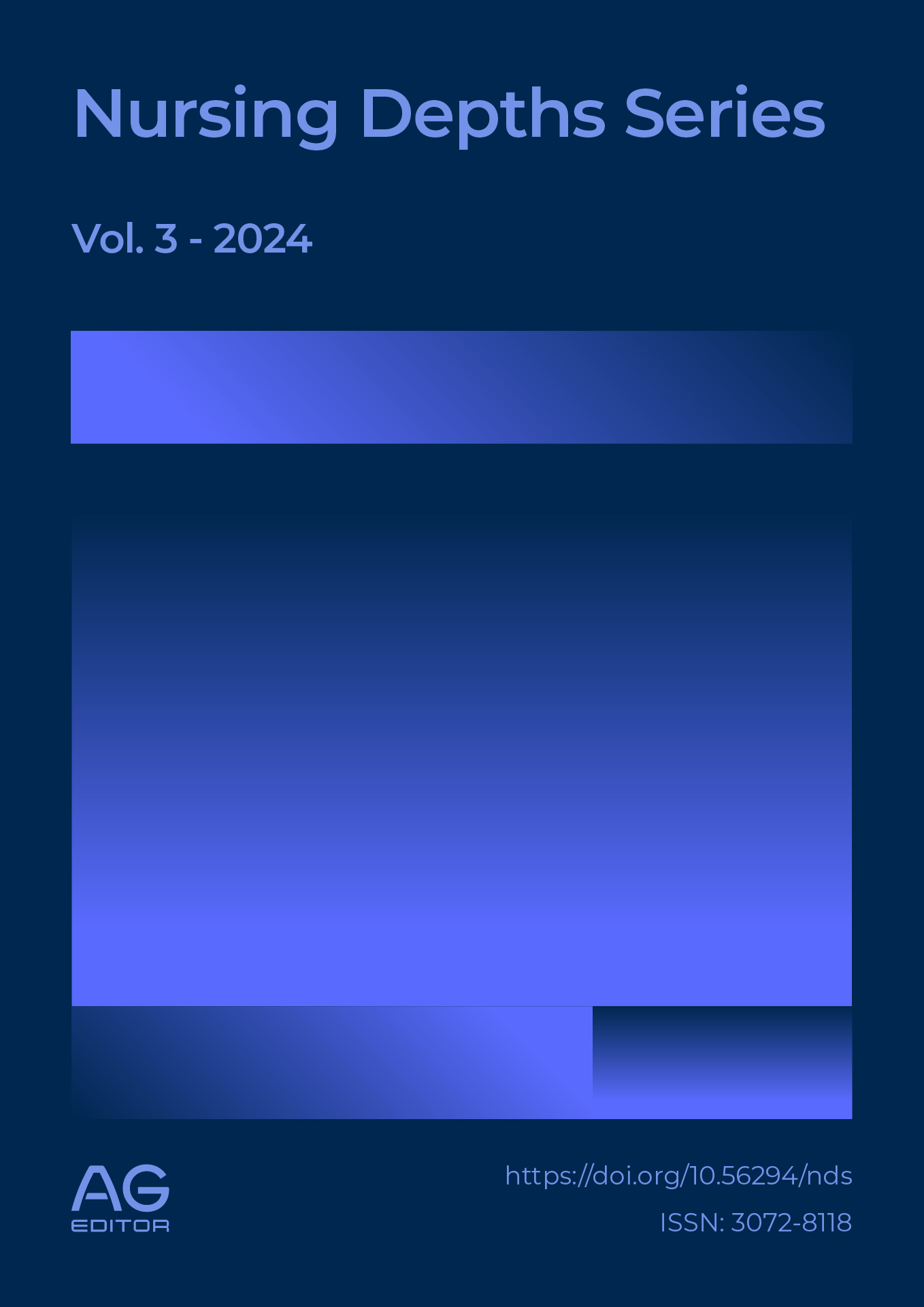Nursing care in the mental health of an underserved population in San Juan de Lurigancho
DOI:
https://doi.org/10.56294/nds2024119Keywords:
Mental Health, Vulnerability, Stress, Depression, AnxietyAbstract
Mental health worldwide was in crisis due to the COVID-19 pandemic, facing situations that compromised their lives and that of their families. In response, people showed negative factors such as depression, anxiety, and stress. Therefore, the research objective is to determine the nursing care in the mental health of an underserved population in San Juan de Lurigancho. This is a quantitative, descriptive-cross-sectional study, with 480 participants who answered a survey with sociodemographic data and the depression, anxiety, and stress scale. The results show that 39.8% had normal depression, 13.5% mild depression, 27.1% moderate depression, 4.8% severe depression, and 14.8% extremely severe depression. In conclusion, coping strategies must be implemented for young people and adults, allowing them to maintain their mental health in the face of risky situations that compromise their lives and that of their families.
References
[1] T. Velavan and C. Meyer, “The COVID-19 epidemic,” Trop. Med. Int. Heal., vol. 25, no. 3, pp. 278–280, Mar. 2020, doi: 10.1111/tmi.13383. DOI: https://doi.org/10.1111/tmi.13383
[2] J. Huarcaya, “Mental health considerations about the COVID-19 pandemic,” Rev. Peru. Med. Exp. Salud Publica, vol. 37, no. 2, pp. 327–334, 2020, doi: 10.17843/RPMESP.2020.372.5419. DOI: https://doi.org/10.17843/rpmesp.2020.372.5419
[3] X. Chunfeng, “A Novel approach of Consultation on 2019 novel coronavirus (COVID-19)-related psychological and Mental problems: Structured letter therapy,” Psychiatry Investig., vol. 17, no. 2, pp. 175–176, Feb. 2020, doi: 10.30773/pi.2020.0047. DOI: https://doi.org/10.30773/pi.2020.0047
[4] M. Taquet, S. Luciano, J. Geddes, and P. Harrison, “Bidirectional associations between COVID-19 and psychiatric disorder: retrospective cohort studies of 62 354 COVID-19 cases in the USA,” The Lancet Psychiatry, vol. 8, no. 2, pp. 130–140, Feb. 2021, doi: 10.1016/S2215-0366(20)30462-4. DOI: https://doi.org/10.1016/S2215-0366(20)30462-4
[5] R. O’Connor et al., “Mental health and well-being during the COVID-19 Pandemic: Longitudinal analyses of adults in the UK COVID-19 Mental Health & Wellbeing study,” Br. J. Psychiatry, vol. 218, no. 6, pp. 326–333, Jun. 2021, doi: 10.1192/bjp.2020.212. DOI: https://doi.org/10.1192/bjp.2020.212
[6] Organizacion Panamericana de la Salud, “Salud Mental,” OPS, 2013. https://iris.paho.org/bitstream/handle/10665.2/31342/salud-mental-guia-promotor.pdf?sequence=1&isAllowed=y#:~:text=La Organización Mundial de la Salud (OMS) define salud mental,una contribución a su comunidad”
[7] Organización Panamericana de la Salud, “Salud Mental y COVID-19,” OPS, 2020. https://www.paho.org/es/salud-mental-covid-19#:~:text=El miedo%2C la preocupación y,de la pandemia COVID-19 (accessed Nov. 03, 2022).
[8] A. Suárez, “La Salud Mental en Tiempos de la COVID-19,” Rev. Esp. Salud Publica, vol. 94, no. 1, pp. 1–4, 2020, Accessed: Nov. 03, 2022. [Online]. Available: https://www.sanidad.gob.es/biblioPublic/publicaciones/recursos_propios/resp/revista_cdrom/VOL94/EDITORIALES/RS94C_202010126.pdf.
[9] J. Hernandez, “Impacto de la COVID-19 sobre la salud mental de las personas,” Medicent Electron, vol. 24, no. 1, pp. 578–594, 2020, Accessed: Nov. 03, 2022. [Online]. Available: http://scielo.sld.cu/pdf/mdc/v24n3/1029-3043-mdc-24-03-578.pdf.
[10] A. Parrado and J. León, “COVID-19: Factores asociados al Malestar Emocional y Morbilidad Psíquica en población Española,” Rev. Española Salud Publica, vol. 94, no. 8, pp. 1–16, 2020, Accessed: Nov. 03, 2022. [Online]. Available: https://www.sanidad.gob.es/biblioPublic/publicaciones/recursos_propios/resp/revista_cdrom/VOL94/ORIGINALES/RS94C_202006058.pdf.
[11] C. Ho, C. Chee, and R. Ho, “Mental Health Strategies to Combat the Psychological Impact of Coronavirus Disease 2019 (COVID-19) Beyond Paranoia and Panic,” Ann., vol. 49, no. 3, pp. 155–160, 2020, Accessed: Nov. 03, 2022. [Online]. Available: https://annals.edu.sg/pdf/49VolNo3Mar2020/V49N3p155.pdf. DOI: https://doi.org/10.47102/annals-acadmedsg.202043
[12] C. Wang et al., “Immediate psychological responses and associated factors during the initial stage of the 2019 coronavirus disease (COVID-19) epidemic among the general population in China,” Int. J. Environ. Res. Public Health, vol. 17, no. 5, p. 1729, Mar. 2020, doi: 10.3390/ijerph17051729. DOI: https://doi.org/10.3390/ijerph17051729
[13] C. Hermosa et al., “Síntomas de depresión, ansiedad y estrés en la población general ecuatoriana durante la pandemia por COVID-19.,” Rev. Ecuatoriana Neurol., vol. 30, no. 2, pp. 40–47, 2021, doi: 10.46997/revecuatneurol30200040. DOI: https://doi.org/10.46997/revecuatneurol30200040
[14] M. Ñañez, G. Lucas, R. Gómez, and R. Sánchez, “El Covid-19 en la salud mental de los adolescentes en Lima Sur, Perú,” Horiz. la Cienc., vol. 12, no. 22, pp. 219–231, Dec. 2021, doi: 10.26490/uncp.horizonteciencia.2022.22.1081. DOI: https://doi.org/10.26490/uncp.horizonteciencia.2022.22.1081
[15] C. Fernández and P. Baptista, “Metodología de la Investigación.” p. 634, 2015, [Online]. Available: http://observatorio.epacartagena.gov.co/wp-content/uploads/2017/08/metodologia-de-la-investigacion-sexta-edicion.compressed.pdf.
[16] A. Lovibond, “Depression Anxiety Stress Scale (DASS-21).” 1995, [Online]. Available: http://www2.psy.unsw.edu.au/dass/Download files/Dass21.pdf.
Published
Issue
Section
License
Copyright (c) 2024 Paul Espiritu-Martinez, Rebeca Rocio Gomez Rosales, Blas Apaza Huanca (Author)

This work is licensed under a Creative Commons Attribution 4.0 International License.
The article is distributed under the Creative Commons Attribution 4.0 License. Unless otherwise stated, associated published material is distributed under the same licence.






